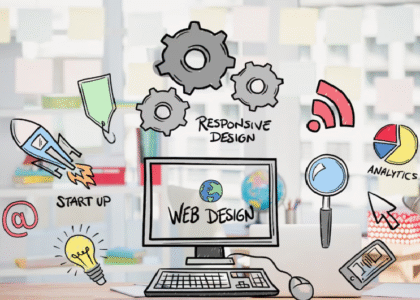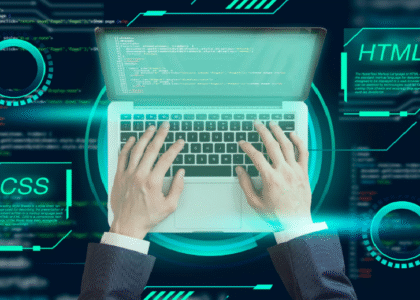Libraries have always formed the backbone of knowledge and culture. As the world is changing with time, so are the expectations of library members. In the present world, the traditional way of managing library services falls short in meeting the increasing demands of its members. Enter Library Management System Software-a turbocharger for member experience. The aim of this blog post is to describe how library software can enhance member satisfaction by smoothing operational processes, providing personalized services, and ensuring that resources are managed with a view toward efficiency.

ADVERTISEMENT
Increasing Accessibility and Convenience
- Seamless Digital Access
First and foremost, library software in a way helps in the creation of members’ optimized fraternity by providing them with resources that they can access digitally with ease. We are now in the era where the need to visit the physical library to acquire a book or any other material is not necessary. However, such access is significantly possible through an efficient Library Management System Software system in which members may be able to borrow ebooks, audiobooks, journals and databases among others without physically visiting the library. Thus convenience becomes very useful for such a member who has mobility issues or lives far from the library or has a tight schedule.
- Easy traceability and retrieval
In most instances, tracing and retrieving any book in a highly stocked library can become an uphill task. Library software enhances advanced searching. Members can be able to perform their material search by a keyword, author name, genre, and even a specific phrase. The software may also provide suggestions for associated materials based on the member’s previous search history or preference. This saves not only time but also provides an enhanced user experience since members will have an easy time finding exactly what they are looking for.
- 24/7 Availability
The other major advantage of library software is its potential to facilitate access from anywhere at any time. Many physical libraries maintain their functioning for only specific hours within a day, but a digital library running on a library management system stays open all day and night. Members can access browsing, borrowing, and returning at any time, adding the level of convenience that has become so important in today’s fast-paced environment.
ADVERTISEMENT
Personalization and Member Engagement
- Customized recommendations
Members expect more from simple access to resources in this age of personalization-they expect content relevance to interests. Library software can study a member’s borrowing history, search patterns, and preferences to make recommendations with personalized precision. From new books to forthcoming events and related authors, these tailored recommendations go a long way in enhancing the member experience, building a perception that the library is better aligned with the needs of each individual.
- Customizable User Profiles
Library management software enables the creation and management of user profiles by the members themselves. Members can, furthermore, configure notification preferences, keep tabs on what they are reading, put together a wish list of books, and even set reading goals. This not only makes the use of the library interactive but also provides an impetus for the members to engage more seriously with what the library has to offer.
- Enhanced Communication
Effective communication is key to member satisfaction. With library software, libraries can communicate directly with members through email, SMS, or app notifications. From gentle reminders of due dates, new arrivals, or special events, these communications keep members up to speed and on the same page. Members can provide their feedback or ask questions directly through the platform, allowing two-way communication, which increases satisfaction.
ADVERTISEMENT
Streamlining Operations for a Better Member Experience
- Efficient Management of Resources
Indeed, the management of several thousands resources in a library is not an easy affair. The Management System Software helps simplify matters in regard to automating the cataloging, inventory, and circulation process of sources in the library. This in effect ensures that members can always locate the resources when in need. It does this by automatically changing the status of a borrowed book and thus immediately and up-to-the-minute availability for other members.
- Quick and Easy Checkouts
Long queues and manual checkouts irritate members. Quick and easy checkouts mean usage of either self-service kiosks or mobile apps. Members can scan the barcode of the book they want to lend, and the software will take care of the rest. This decreases waiting and reduces human error while performing checkouts.
- Automated Reminders and Renewals
One pain point common to all members is remembering due dates. Library management system can automatically email reminders prior to the date a book is due so that any late returns and ensuing fines are minimal. In addition, renewals can be easily performed online by members without them physically needing to come to the library to renew books. It is this sort of automation that enhances satisfaction but also encourages more frequent usage of the library.
ADVERTISEMENT
Supporting Educational and Research Needs
- Access to Diverse Resources
Libraries are no longer just about books. Nowadays, they provide access to academic journals, research papers, and multimedia, among others, including online courses. This library software eases access to the resources it provides to cater to its members’ needs in their education and research. Be it a member who is a student looking for study materials or a researcher trying to retrieve academic papers related to his study, the software makes this possible quickly and more efficiently.
- Integrated Learning Tools
Most Library Management System Software packages have integrated learning tools such as citation generators, research organizers, and collaboration platforms that go a long way in helping students and researchers make their work more effective. For example, with the aid of a citation generator, references can automatically be formatted into multiple styles of citation, and the collaboration platform can be shared between several members working on one project. These features not only enhance the member experience but also provide a rich educational resource for the library.
- Remote Learning Facilitated
During times of remote learning, the libraries too need to adapt and move forward in order to ensure that virtual students obtain its services. Library software allows organizations to support remote learning through online access to digital resources, study rooms, and events. Make sure the members can undergo webinars, discussion forums, or collaboration with other participants within the digital landscape of your library. This will ensure that even in a virtual setup, the library is still a helpful place to learn.
ADVERTISEMENT
Conclusion
Implementation of the library management system has revolutionized the way libraries work and engage with their members. By allowing greater access, personalization of their services through simplifying the way library services operate and making study-related needs easier to access, this library software greatly enriches the experience of its members. Since libraries are still growing in the digital era, the facilitation of advanced library software is not a convenience but rather a mandate to be able to meet today’s demanding expectations of library members.
ADVERTISEMENT






